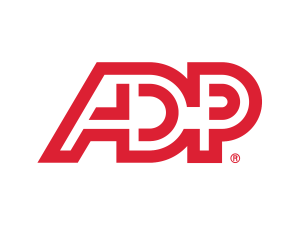Glassdoor predicts a hybrid work environment, increasing diversity efforts, and comp adjustments. Here are the five trends for 2021, according to its new report.

Image: iStock/poike
COVID-19 has radically altered all we thought we knew about the workplace, ushering in an age of remote work that looks like it’s here to stay. The effects can be seen at every level—from how employees are handling it, to the tools teams use to communicate, to how to onboard new employees. A new Glassdoor report takes a look at the five biggest trends of 2020, and what to expect for the future of work.
Trend 1: Remote work will become a permanent part of our vocabulary
Working from home didn’t start with the coronavirus pandemic, but many of employees were forced to make the switch because of COVID-19, resulting in millions of Americans now working remotely. Beyond presenting a slew of hurdles when it comes to the technical aspects of work, employee hiring and onboarding and data privacy, this shift has also spurred a wave of innovation, according to Glassdoor. While remote work has benefits like lower overhead costs, no more commuting, for instance, it also has downsides, such as isolation and poor communication. It seems that there is no replacement for the occasional in-person interactions. When it is safe to return to work, many employees may do so, however, offices are expected to become more hybrid environments, and more flexible. The majority of Glassdoor’s own workforce (70.1%) says it prefers a hybrid situation. Access to remote work is somewhat dependent on industry. Nearly a quarter of tech employees have the option, while only 11% of workers in restaurants and food services, 24% of retail workers and just 29% of workers in transportation and logistics have such access, the report states.
SEE: Coronavirus: Critical IT policies and tools every business needs (TechRepublic Premium)
Trend 2: Equality in the workforce has become non-negotiable
As the Black Lives Matter movement has highlighted systemic racism in America, the corporate world must take a hard look at its role in these matters, and actively combat inequality. According to Glassdoor, “A persistent driver of the stark differences in the lived experience of underrepresented groups in America is economic inequality. As recently as 2016, the median net wealth of white households in America was $171,000; for Black households, it was $17,150.”
Diversity, equity, and inclusion roles are on the rise, and we should expect to see an even greater push for these positions in 2021. Glassdoor says this is good news all around, because increasing diversity at work attracts a greater pool of candidates—a third of employees and job seekers won’t apply “for a job at a company where there’s a lack of workforce diversity”—and improves satisfaction at work.
Trend 3: Remote work could lead to major salary adjustments
Remote work means that many workers are deciding to move out of expensive metro areas, opting for more rural destinations. Some of these workers, Glassdoor predicts, “could face eventual pay adjustments of -5% to -30% depending on where they move.” This could pose a conundrum for employees who are considering relocating, and for employees to determine how much to adjust pay. Glassdoor expects “a tidal wave of comp adjustments in 2021 as many tech and professional services workers go remote and move away from company HQs.”
Trend 4: Corporate culture must embrace employee needs
Corporate headquarters have become somewhat obsolete post-COVID, and when employees do return to the office, their feedback on what works will be critical in rebuilding corporate culture. These have to do less with the physical space, however, and more with the mission of the company, Glassdoor finds. What it feels like to work from home should be of the utmost concern to employers. A slew of tools that offer workers a way to check-in on their experiences, can help employers monitor employee sentiment, however, helping prevent issues before they begin to affect employee satisfaction and productivity.
Trend 5: Low-skilled service jobs are at high risk
Even if the global recession subsides, many jobs may not return. More than 20 million jobs were lost in March and April combined. While the job market regained momentum this fall, getting halfway back to pre-COVID employment levels by September, Glassdoor expects that “lower-skilled service jobs, education jobs, administrative office roles, sales roles and many discretionary healthcare jobs” are still at risk.
Here are a few of the job losses, by percentage, since COVID-19 hit:
- Beauty consultants: 53%
- Valets: 51%
- Pet groomers: 41%
- Professors: 39%
- Event coordinators: 69%
- Receptionists: 35%
- Product demonstrators: 63%
- Brand ambassadors: 41%
- Audiologists: 70%
- Opticians: 61%
- Physical therapists: 40%
It’s not all bad news, however. On the plus side, “some employers in e-commerce, health care and other front-line industries will likely continue to ramp up hiring in 2021,” Glassdoor reports. These include warehouse worker jobs and registered nurses —up 174% and 51%, respectively.
Also see
Source of Article




